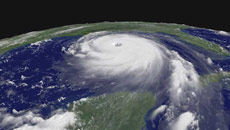Are you aware of the outer edge of our solar system?
Astronomers have identified a new most-distant member, bringing the region into the limelight.
The distant dwarf planet, called "2012 VP113", has been found to be beyond the known edge of the solar system.
This is likely to be one of thousands of distant objects that are thought to form the so-called inner Oort cloud.
The discovery also indicates the potential presence of an enormous planet, perhaps up to 10 times the size of Earth, not yet seen, but possibly influencing the orbit of this dwarf planet.
“This is an extraordinary result that redefines our understanding of our solar system," said Scott Sheppard from Carnegie Institution for Science.
The known solar system can be divided into three parts.
The rocky planets like earth which are close to the sun, the gas giant planets which are further out and the frozen objects of the Kuiper belt which lie just beyond Neptune's orbit.
Beyond this, there appears to be an edge to the solar system where only one object -- Sedna -- was previously known to exist for its entire orbit.
But the newly found "2012 VP113" has an orbit that stays even beyond Sedna, making it the furthest known in the solar system.
“The search for these distant inner Oort cloud objects beyond Sedna and '2012 VP113' should continue as they could tell us a lot about how our solar system formed and evolved," Sheppard explained.
Sheppard and Chadwick Trujillo of the Gemini Observatory used the new Dark Energy Camera (DECam) on the NOAO 4 meter telescope in Chile for discovery.
They found that some of these inner Oort cloud objects could rival the size of Mars or even Earth.
“This is because many of the inner Oort cloud objects are so distant that even very large ones would be too faint to detect with current technology,” Sheppard noted.
Many of the comets we see were objects that were perturbed out of the outer Oort cloud.
Inner Oort cloud objects are not highly affected by the gravity of other stars and thus have more stable and more primordial orbits.





